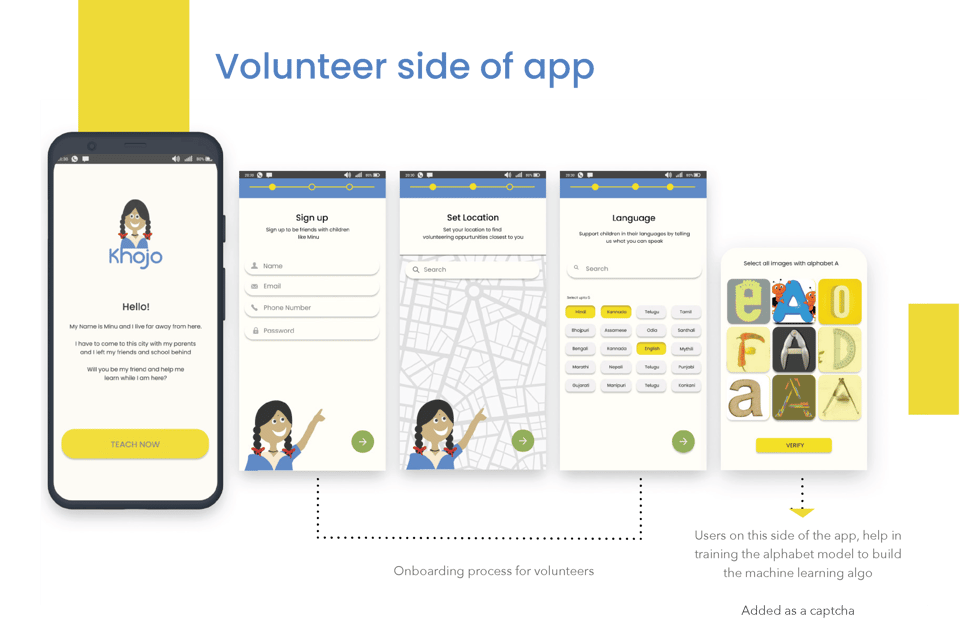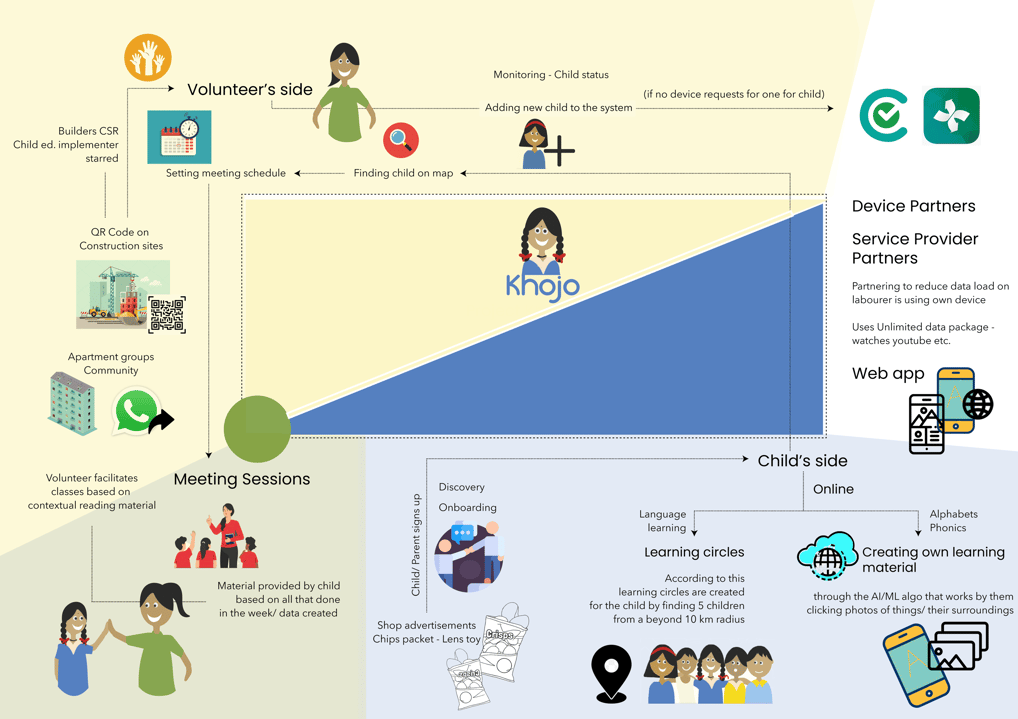PROJECT KHOJO
Team : Individual
Role: Research, Synthesis, Concept development, design
Tools:
Duration: 3 months | Srishti Institute of Art, Design and Technology
How might we .............
Project “Project khojo” is an service integrated app that has been designed for migrating children that reimagines language learning and looks at how to contextualise basic literacy for children by making language learning fun and explorative. The project looks at providing support from the neighbouring community in order to encourage, incentivise, and make learning out of school fun to help the child stay in touch with basics and practice to be ready to get back with his basics in check.
THE CHALLENGE
DESIGNING FOR?
The project required us to design for the Migrant construction communities, in Bangalore that moved from Rural to Urban areas, seeking job opportunities. The communities are diverse in culture, ethnography and demographics and poses unique challenges that are very contextual and specific to their environment.
OBJECTIVE?
The aim of the project was to to identify a need context, construction site and a community within, that provides enough scope for a thorough study and propose innovative human-centric solutions in the form of products, systems or services while considering environmental impact and sustainability in use of materials.
2.PROJECT TIMELINE


01. Responsibilities as older siblings
As parents are working through the day, older siblings are made to look after the younger ones and that is why parents bring them to the city with them
(QUOTES FROM THE FIELD) (PG21)
"Sharam aati hai udhar, mazza nahi aata"
(I feel shy going there, and its not fun either)
Girls who migrate often feel shy during their adoloscence to enter newer school or even go to schools back in their village.
REDEFINED PROBLEM STATEMENT
A migrant child’s education gets discontinued and fragmented when they move to and fro with their parents
Discovered User’s problem
The education system does not currently take into account the implications of the migrant status of the child that result from the changing demographics and fragmented time periods of the child’s movements
The construction industry fails to implement child education on their sites
Discovered system’s problem
To create an intervention that allows for continuation of learning through the introduction of situational based learning that would allow relooking at contextualising basic literacy
Service vision
REDEFINED PROBLEM STATEMENT
How might we design a moving system of learning for children who are also constantly moving?
How might neighbouring educated communities volunteer and come forward to teach migrant settlements?
OUTCOME


SERVICE MAP



